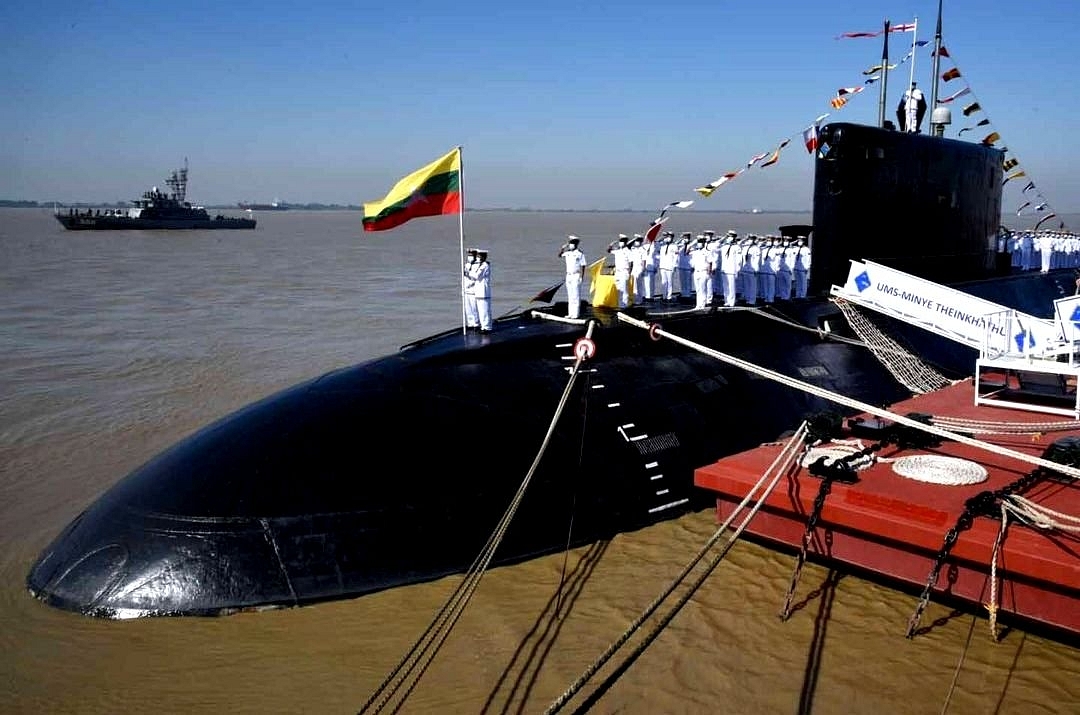WolfPack86
New Member
- Joined
- Oct 20, 2015
- Messages
- 10,571
- Likes
- 16,993
Empowering neighbours: India will deliver Kilo Class submarine INS Sindhuvir to Myanmar Navy. "This will be the first submarine of Myanmar Navy," MEA spokesperson Anurag Srivastava said. Army Chief General Naravane and FS Shringla recently visited Myanmar. India has also agreed to give other military hardware to the eastern nation
New Delhi: Amid increasing Chinese dominance in the region, India will be delivering a Kilo Class submarine INS Sindhuvir to Myanmar Navy. "This will be the first submarine of Myanmar Navy," Anurag Srivastava, Spokesperson of Ministry of External Affairs (MEA) said during a briefing here on Thursday.
The transfer of military hardware comes after the recent visit of Army Chief General MM Naravane and Foreign secretary Harsh Vardhan Shringla to Myanmar. During that visit which took place earlier this month, India had agreed to supply artillery guns, tanks, bullet-proof jackets and other such equipment to Tatmadaw, Myanmar's military. New Delhi was already in the process of transferring the conventional submarine, refurbished by state-owned Hindustan Shipyards Limited, to Myanmar, at the time of the visit.
Move In Line With India's 'Act East' Policy
In what underlined the importance attached by India to the Eastern Asian nation, the government, in a statement had said - “India attaches high priority to its relationship with Myanmar in accordance with its ‘Neighbourhood First’ and ‘Act East’ policies. In recent times, both sides have strengthened their cooperation in several areas, including connectivity and trade, development projects, energy, capacity building, defence; and security and culture, and people to people links.”
The move may be viewed on the backdrop of increasing Chinese footprints in the Indian Ocean Region. India has been directly affected by Beijing's expansionist designs, which have been slammed by global powers including the US. Indian and Chinese armies have been locked in a bitter standoff along the Line of Actual Control (LAC) since early this year.
Srivastava also slammed China over that country's comments on the union territories of Ladakh and Jammu and Kashmir said, "The union territories of Ladakh, Jammu & Kashmir have been, are & would remain an integral part of India. China has no locus standi to comment on India's internal matters."

 www.indiandefensenews.in
www.indiandefensenews.in
New Delhi: Amid increasing Chinese dominance in the region, India will be delivering a Kilo Class submarine INS Sindhuvir to Myanmar Navy. "This will be the first submarine of Myanmar Navy," Anurag Srivastava, Spokesperson of Ministry of External Affairs (MEA) said during a briefing here on Thursday.
The transfer of military hardware comes after the recent visit of Army Chief General MM Naravane and Foreign secretary Harsh Vardhan Shringla to Myanmar. During that visit which took place earlier this month, India had agreed to supply artillery guns, tanks, bullet-proof jackets and other such equipment to Tatmadaw, Myanmar's military. New Delhi was already in the process of transferring the conventional submarine, refurbished by state-owned Hindustan Shipyards Limited, to Myanmar, at the time of the visit.
Move In Line With India's 'Act East' Policy
In what underlined the importance attached by India to the Eastern Asian nation, the government, in a statement had said - “India attaches high priority to its relationship with Myanmar in accordance with its ‘Neighbourhood First’ and ‘Act East’ policies. In recent times, both sides have strengthened their cooperation in several areas, including connectivity and trade, development projects, energy, capacity building, defence; and security and culture, and people to people links.”
The move may be viewed on the backdrop of increasing Chinese footprints in the Indian Ocean Region. India has been directly affected by Beijing's expansionist designs, which have been slammed by global powers including the US. Indian and Chinese armies have been locked in a bitter standoff along the Line of Actual Control (LAC) since early this year.
Srivastava also slammed China over that country's comments on the union territories of Ladakh and Jammu and Kashmir said, "The union territories of Ladakh, Jammu & Kashmir have been, are & would remain an integral part of India. China has no locus standi to comment on India's internal matters."

Eye On China: India To Deliver Kilo Class Submarine Ins Sindhuvir To Myanmar Navy
Empowering neighbours: India will deliver Kilo Class submarine INS Sindhuvir to Myanmar Navy. "This will be the first submarine of Myanmar N...


